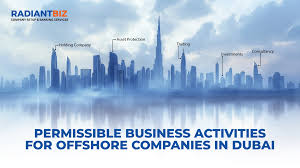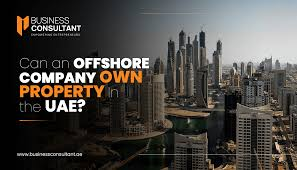Now Reading: Buying UAE Property Through Offshore SPVs: 7 Tax Pros and Cons
-
01
Buying UAE Property Through Offshore SPVs: 7 Tax Pros and Cons
Buying UAE Property Through Offshore SPVs: 7 Tax Pros and Cons

Table of Contents
Offshore SPVs: The UAE’s real estate market in 2025, with AED 893 billion ($243 billion) in 2024 transactions and 7-11% rental yields, is a prime destination for foreign investors, including Americans, seeking freehold properties in areas like Dubai Marina, Saadiyat Island, and Al Marjan Island.
Using offshore Special Purpose Vehicles (SPVs) to purchase UAE properties offers tax efficiency and asset protection but comes with complexities. The UAE’s 9% corporate tax (effective June 2023 under Federal Decree-Law No. 47 of 2022) and the 15% Domestic Minimum Top-up Tax (DMTT) for multinationals with revenues over €750 million (AED 3 billion) starting January 2025 necessitate careful planning.
Below are seven tax-related pros and cons for American investors using offshore SPVs, ensuring compliance while maximizing returns in a tax-free personal income environment.
1. Tax-Free Income in Offshore Jurisdictions
Pro: Offshore SPVs in jurisdictions like the British Virgin Islands (BVI) or Cayman Islands face no corporate tax on UAE rental income or capital gains, preserving 7-11% yields. For example, a BVI SPV owning a AED 5 million ($1.36 million) Dubai South property generating AED 400,000 in rent avoids UAE’s 9% tax (AED 36,000 savings) if no Permanent Establishment (PE) exists in the UAE.
Con: Establishing and maintaining an offshore SPV incurs setup costs (AED 10,000-20,000) and annual fees (AED 5,000-15,000), which may offset tax savings for smaller portfolios. Compliance with UAE’s Economic Substance Regulations (ESR) is required if the SPV manages UAE activities.
2. UAE Free Zone Tax Benefits
Pro: An SPV in a UAE free zone like Dubai Multi Commodities Centre (DMCC) or Ras Al Khaimah Economic Zone (RAKEZ), registered as a Qualifying Free Zone Person (QFZP), enjoys a 0% corporate tax rate on qualifying income (e.g., Al Marjan Island rentals). A DMCC SPV earning AED 3 million ($816,000) in rental income saves AED 270,000 in tax, boosting 8-10% yields.
Con: QFZPs must meet strict substance requirements (e.g., local staff, office), adding costs (AED 50,000+ annually). Income from mainland UAE transactions is subject to 9% tax, requiring careful transaction structuring.
3. Avoidance of UAE Permanent Establishment (PE)
Pro: Offshore SPVs without a UAE office or dependent agent avoid PE status, exempting them from 9% corporate tax on UAE-sourced income, per Ministerial Decision No. 83/2023. A Cayman SPV managing AED 2 million ($545,000) in Saadiyat Island rental income remotely avoids AED 180,000 in tax.
Con: Establishing no PE requires limiting UAE activities (e.g., no local management), which can complicate property operations. Misclassification risks FTA penalties up to AED 10,000, necessitating legal oversight.
4. U.S. Tax Implications and Double Taxation Agreements

Pro: The U.S.-UAE double taxation agreement (DTA) allows credits for UAE taxes paid, reducing U.S. tax liability on repatriated income. A BVI SPV owning AED 10 million ($2.72 million) in Yas Island properties, paying no UAE tax, faces only U.S. tax (e.g., 21% corporate rate), mitigated by credits if UAE tax applies.
Con: U.S. investors must report global income under IRS rules, with SPV income potentially taxed at 37% (individual) or 21% (corporate) rates, plus Global Intangible Low-Taxed Income (GILTI) taxes for controlled foreign corporations, reducing net returns.
5. Zakat Considerations for Muslim Investors
Pro: Muslim American investors using offshore SPVs holding UAE properties for long-term investment (not trade) avoid Zakat (2.5% on wealth above Nisab, ~AED 25,000/$6,800) on property value, only paying on rental income after one lunar year. An SPV with AED 1 million in Ajman Corniche rent owes AED 25,000 in Zakat, manageable with proper planning.
Con: Properties held for resale are subject to Zakat on market value, e.g., AED 250,000 for a AED 10 million portfolio, impacting cash flow. Consulting Islamic scholars ensures accurate Zakat calculations, adding complexity.
6. Simplified Asset Protection and Succession

Pro: Offshore SPVs provide asset protection by isolating UAE properties from personal or other business liabilities, ideal for high-value portfolios in Dubai Creek Harbour. They also simplify succession, bypassing UAE inheritance laws for U.S. estate planning, with no UAE capital gains tax on transfers, supporting 10-15% appreciation potential.
Con: Offshore SPVs face increased scrutiny under UAE’s AML regulations and U.S. Foreign Account Tax Compliance Act (FATCA), requiring annual disclosures and compliance costs (AED 20,000+). Non-compliance risks fines or asset freezes.
7. VAT and Transfer Pricing Compliance
Pro: Offshore SPVs leasing residential properties (post-first sale) avoid UAE’s 5% VAT, saving AED 25,000 on AED 500,000 in rent. SPVs can also structure transactions to minimize transfer pricing issues, ensuring arm’s-length pricing for related-party dealings, preserving 7-9% yields in JVC or Al Reem Island.
Con: Commercial property transactions incur 5% VAT, and complex SPV structures risk transfer pricing adjustments if not compliant with OECD guidelines. Documentation costs and FTA audits (requiring seven-year record retention) add administrative burdens, potentially costing AED 15,000 annually.
Why These Considerations Appeal to American Investors
Offshore SPVs enhance UAE’s 7-11% yields, outpacing global markets like New York (4.2%). Freehold ownership, no personal income tax, and visa programs (2-year Investor Visa for AED 750,000, Golden Visa for AED 2 million) drive demand, with 45% of Dubai’s 2025 buyers being foreign. Proximity to Dubai International Airport (20-45 minutes) and the U.S.-UAE DTA add value. Strategic SPV use balances tax efficiency with compliance, maximizing returns.
Market Outlook and Challenges
The UAE projects 5-8% price growth in 2025, with freehold zones like Saadiyat Island and Al Marjan Island at 10-15%. The DMTT’s 15% rate for MNEs, AML compliance, and FATCA reporting increase costs. A potential 10-15% correction in 2026 due to oversupply (41,000 Dubai units) requires caution. RERA-registered agents and FTA-accredited consultants ensure compliance with nine-month filing deadlines, avoiding penalties up to AED 10,000.
Conclusion
Using offshore SPVs for UAE property offers tax-free income, free zone benefits, PE avoidance, DTA credits, Zakat planning, asset protection, and VAT savings, but involves setup costs, compliance burdens, U.S. tax obligations, and regulatory scrutiny. These pros and cons enable American investors to optimize 7-11% ROI in a dynamic 2025 market. Expert guidance ensures compliance and maximizes wealth creation in Dubai, Abu Dhabi, and Ras Al Khaimah. Tax Pros and Cons
read more: Double Taxation in UAE: 5 Key Rules for Global Investors in 2025





















